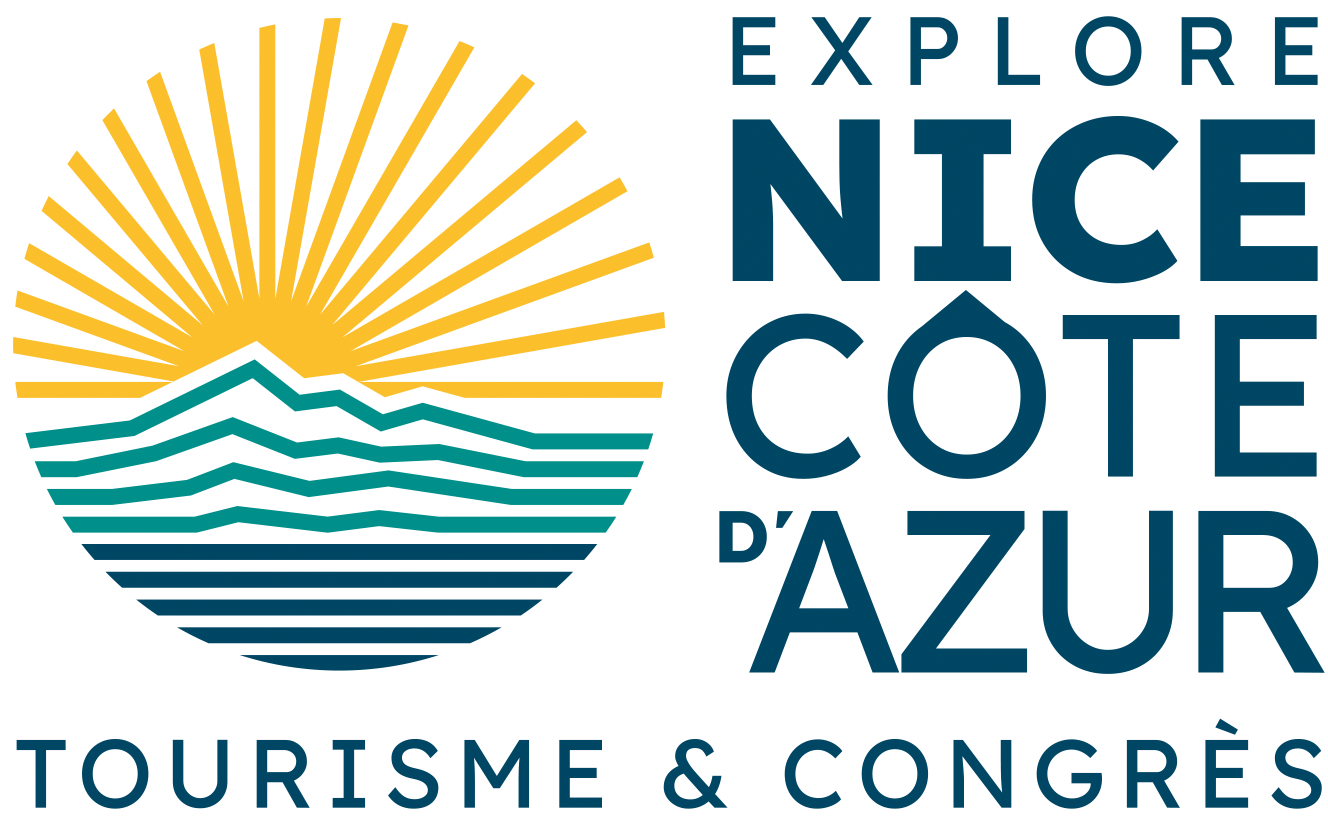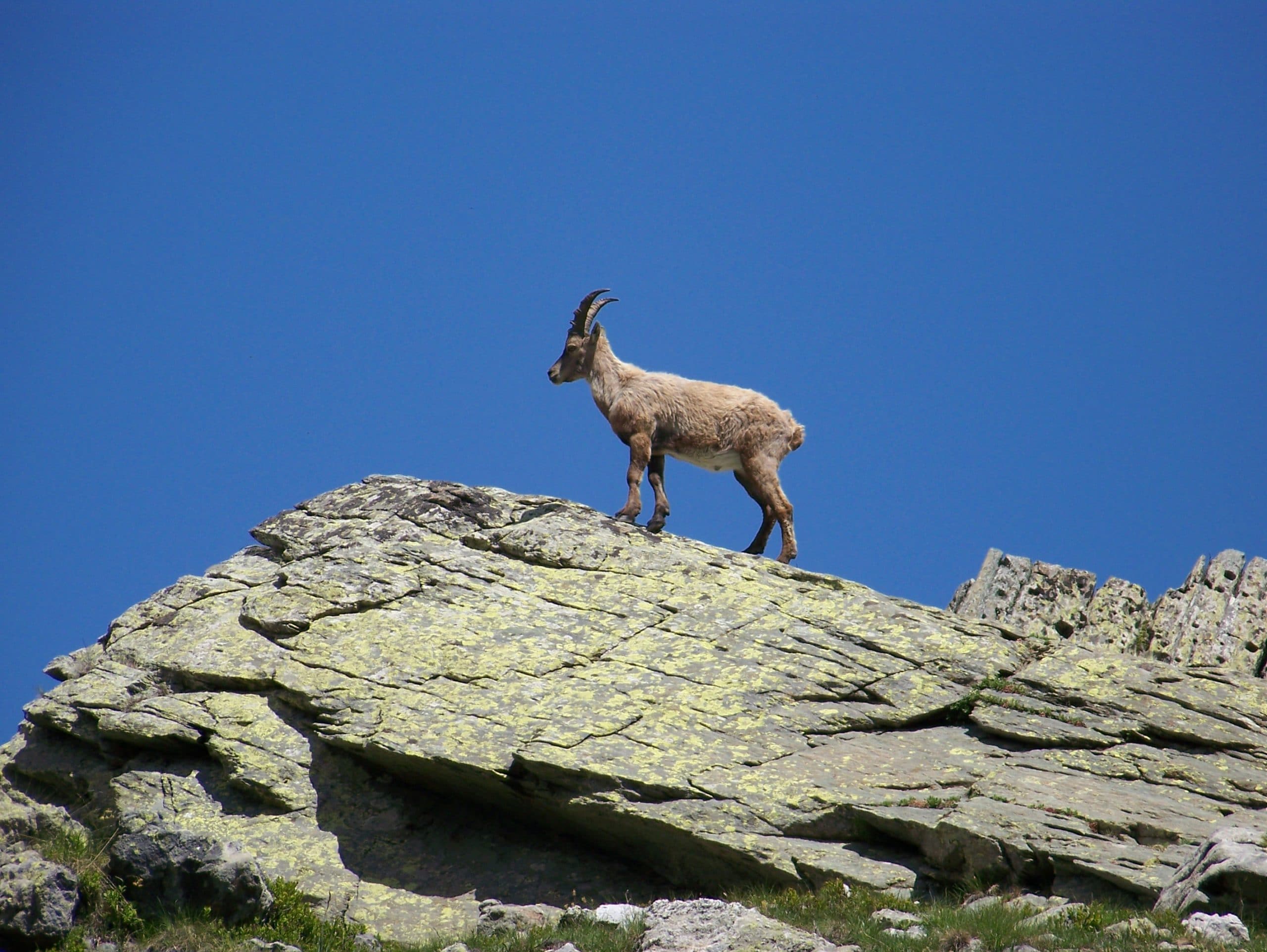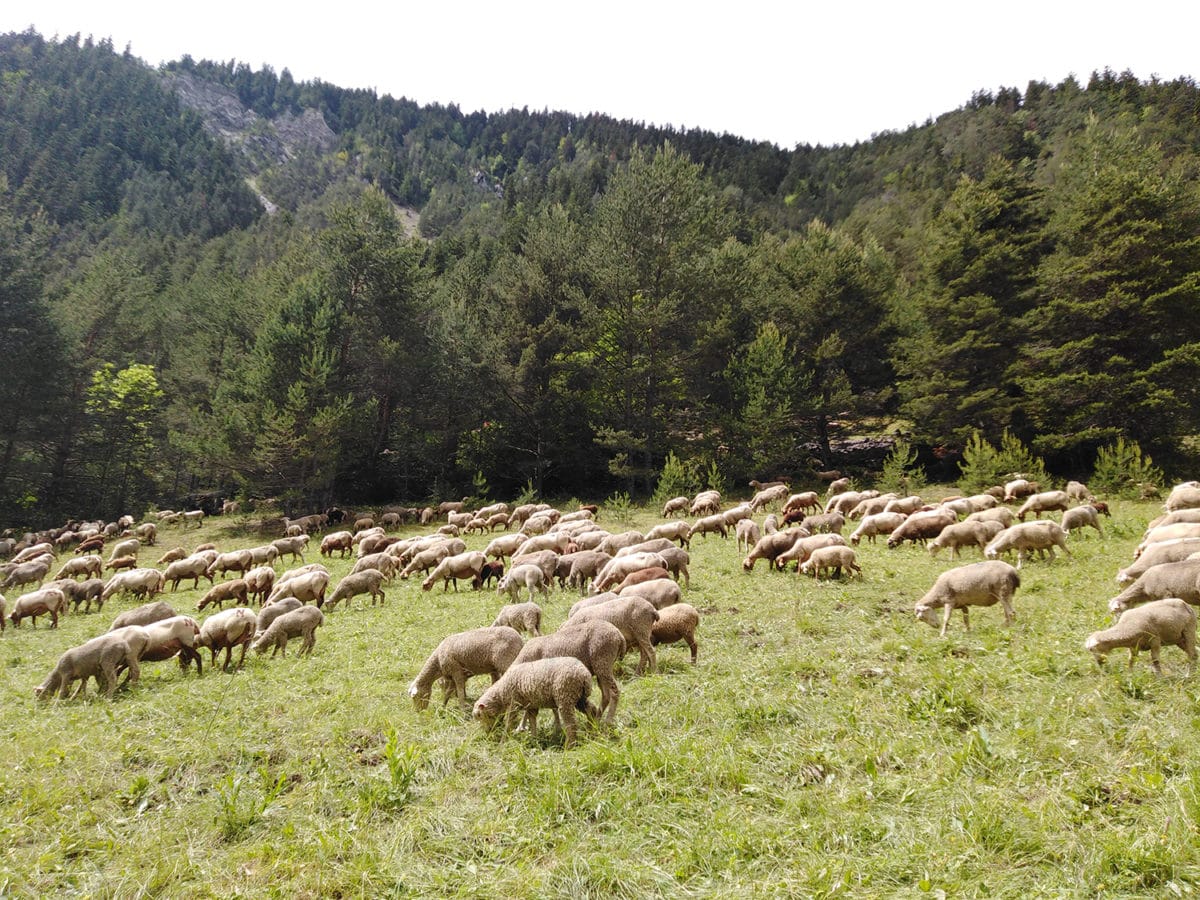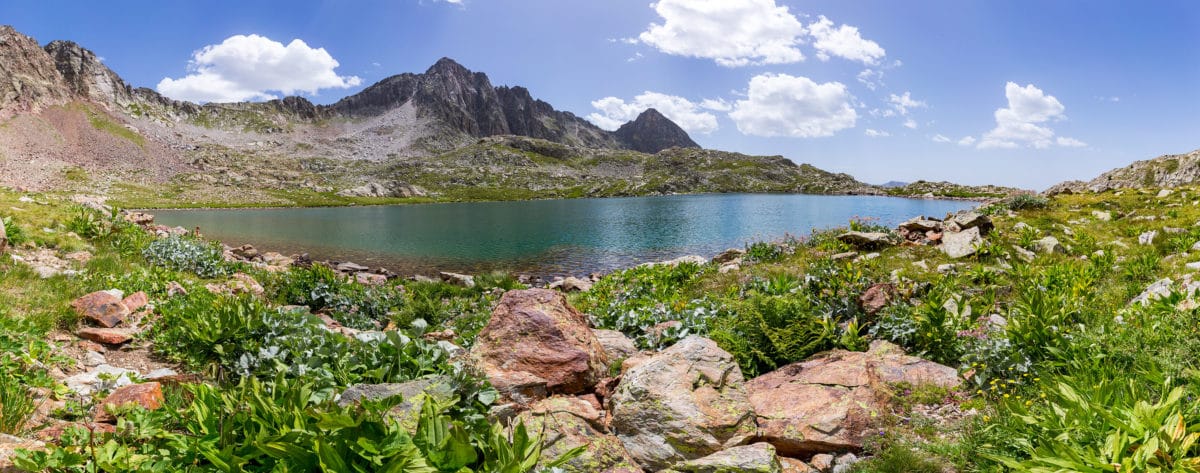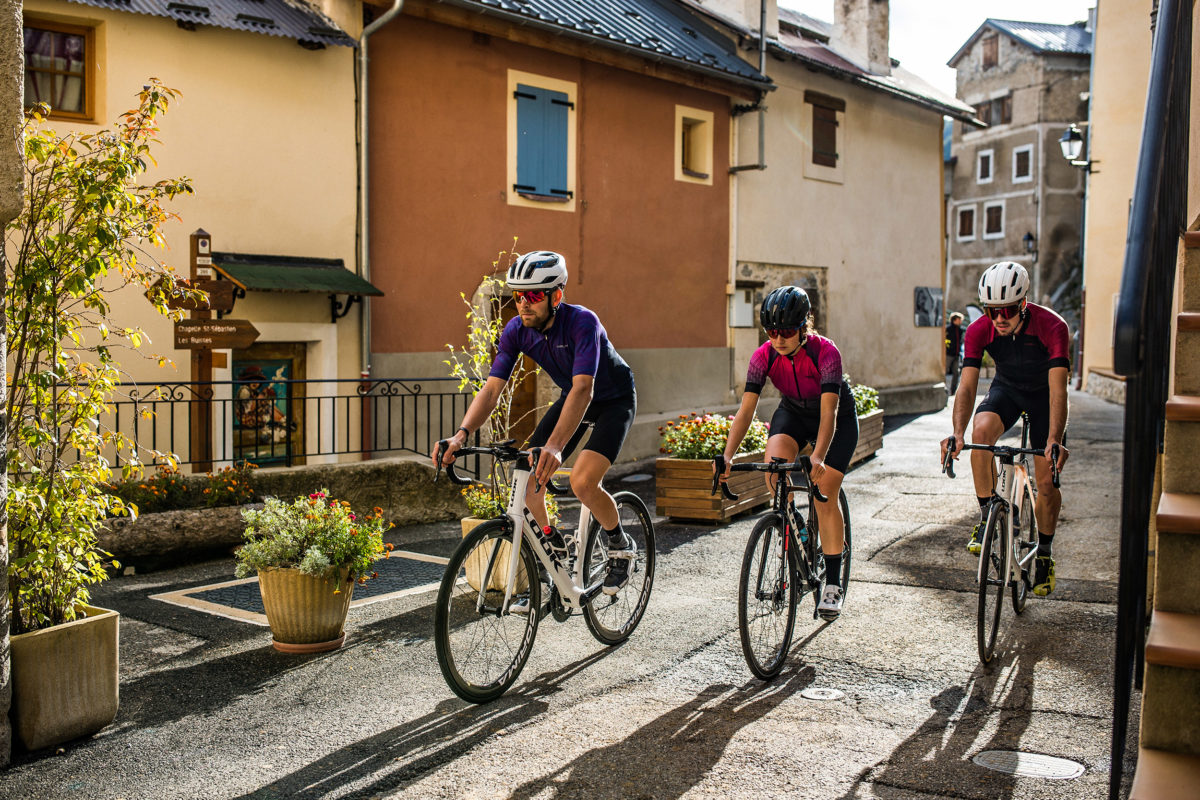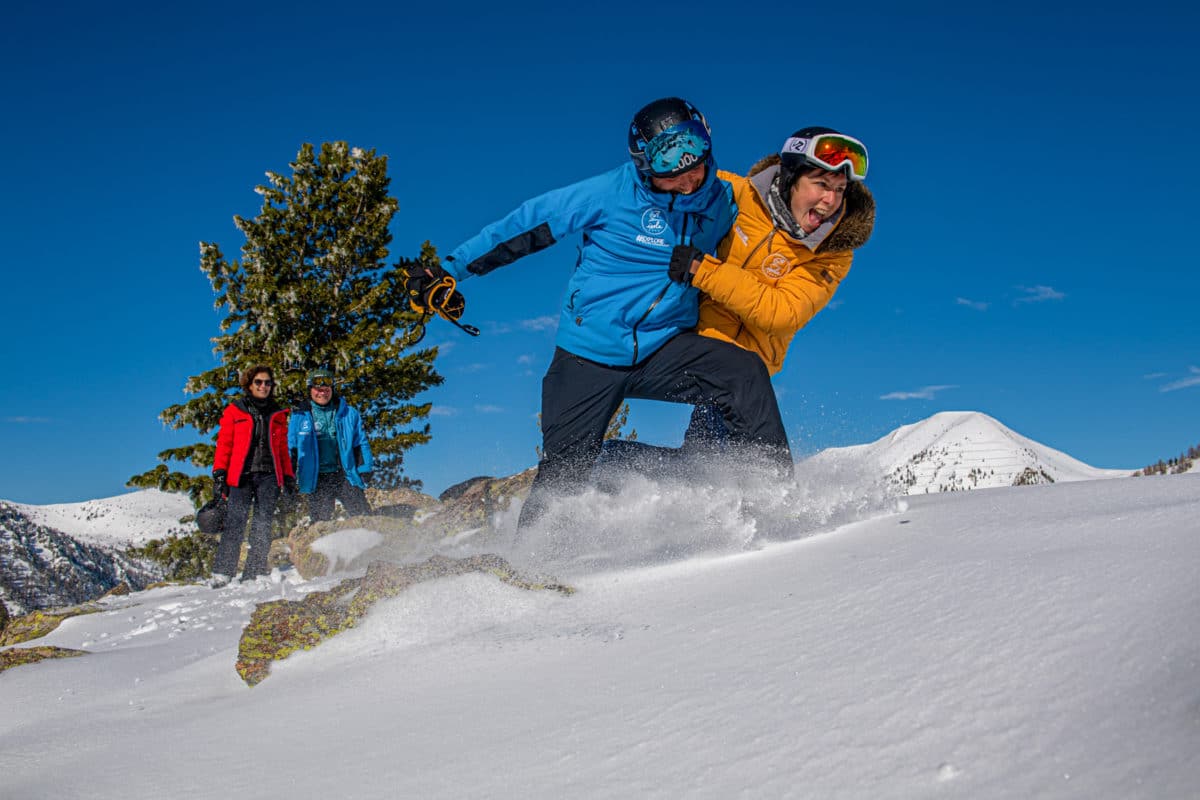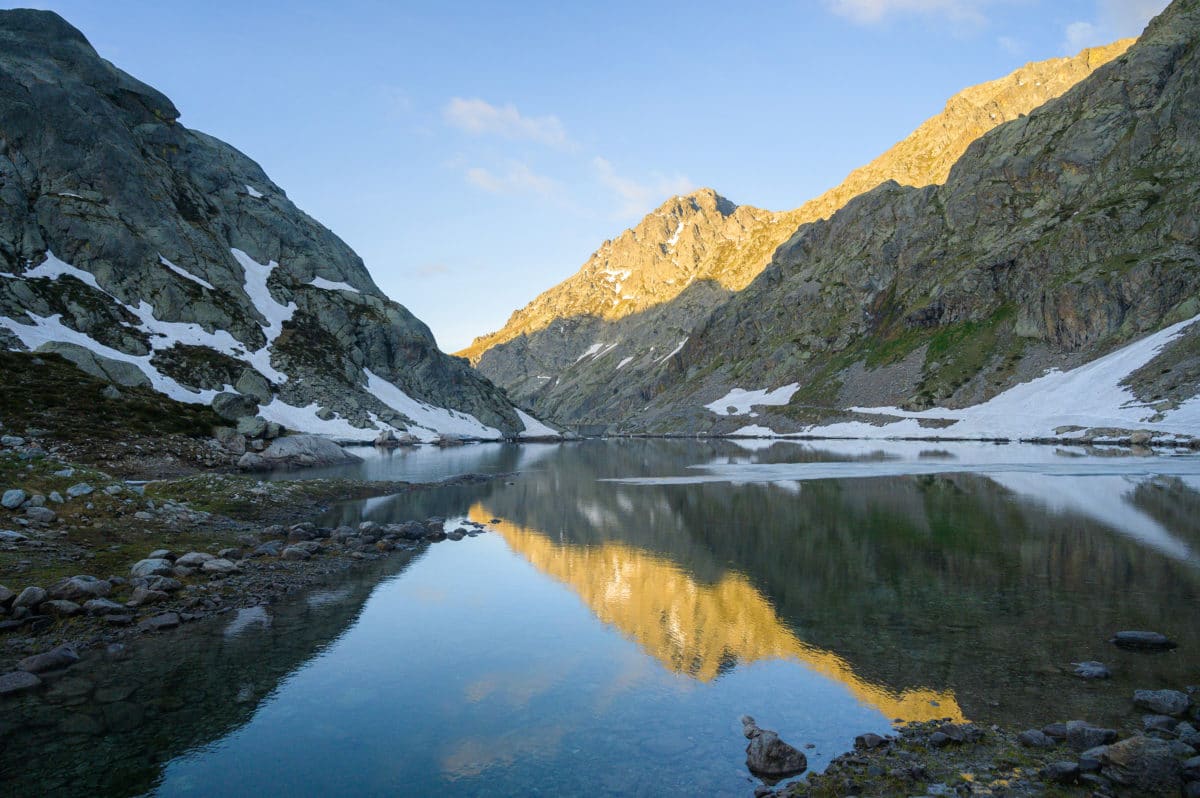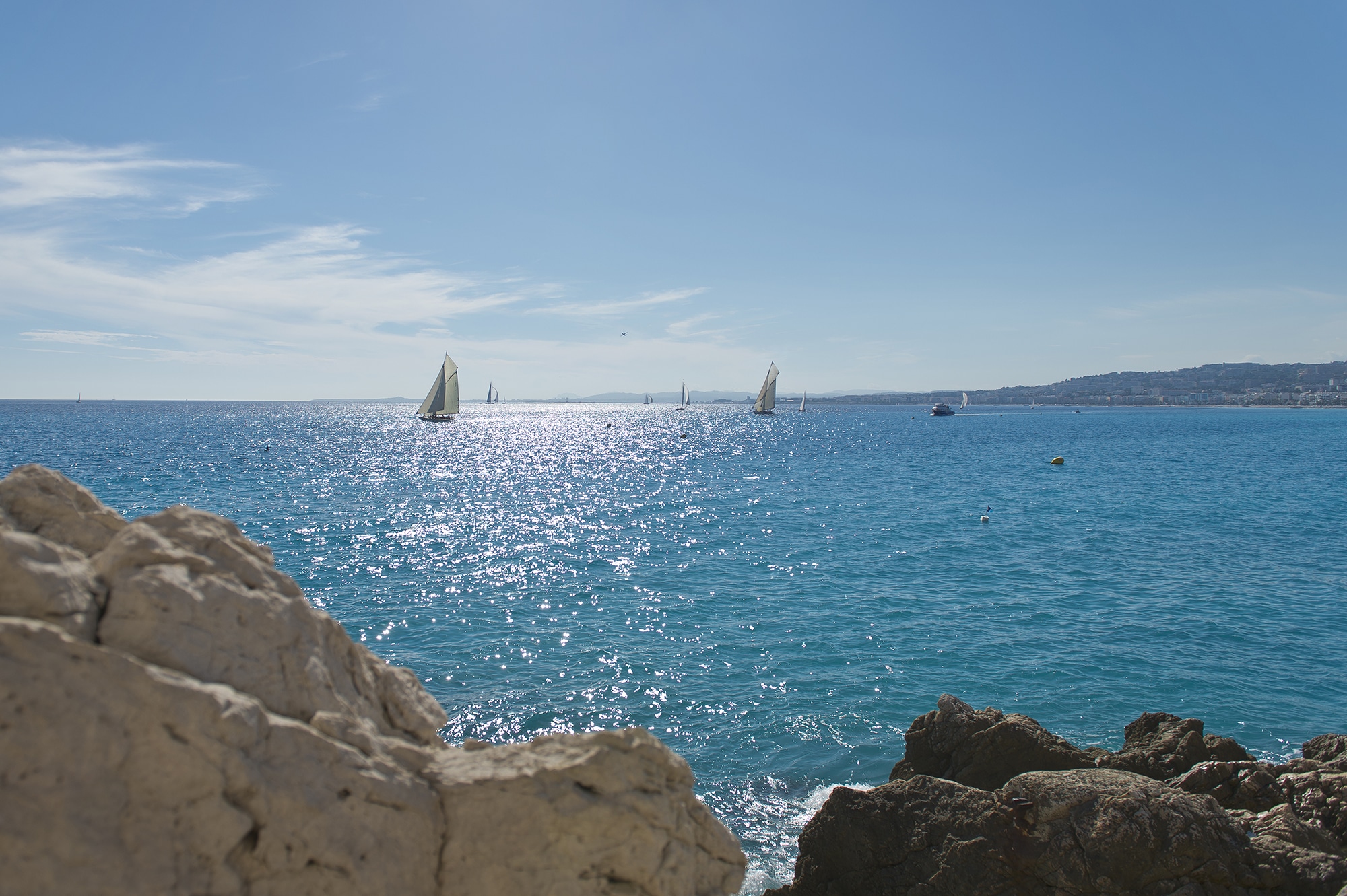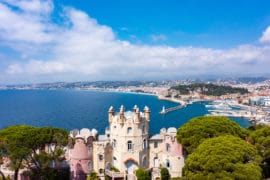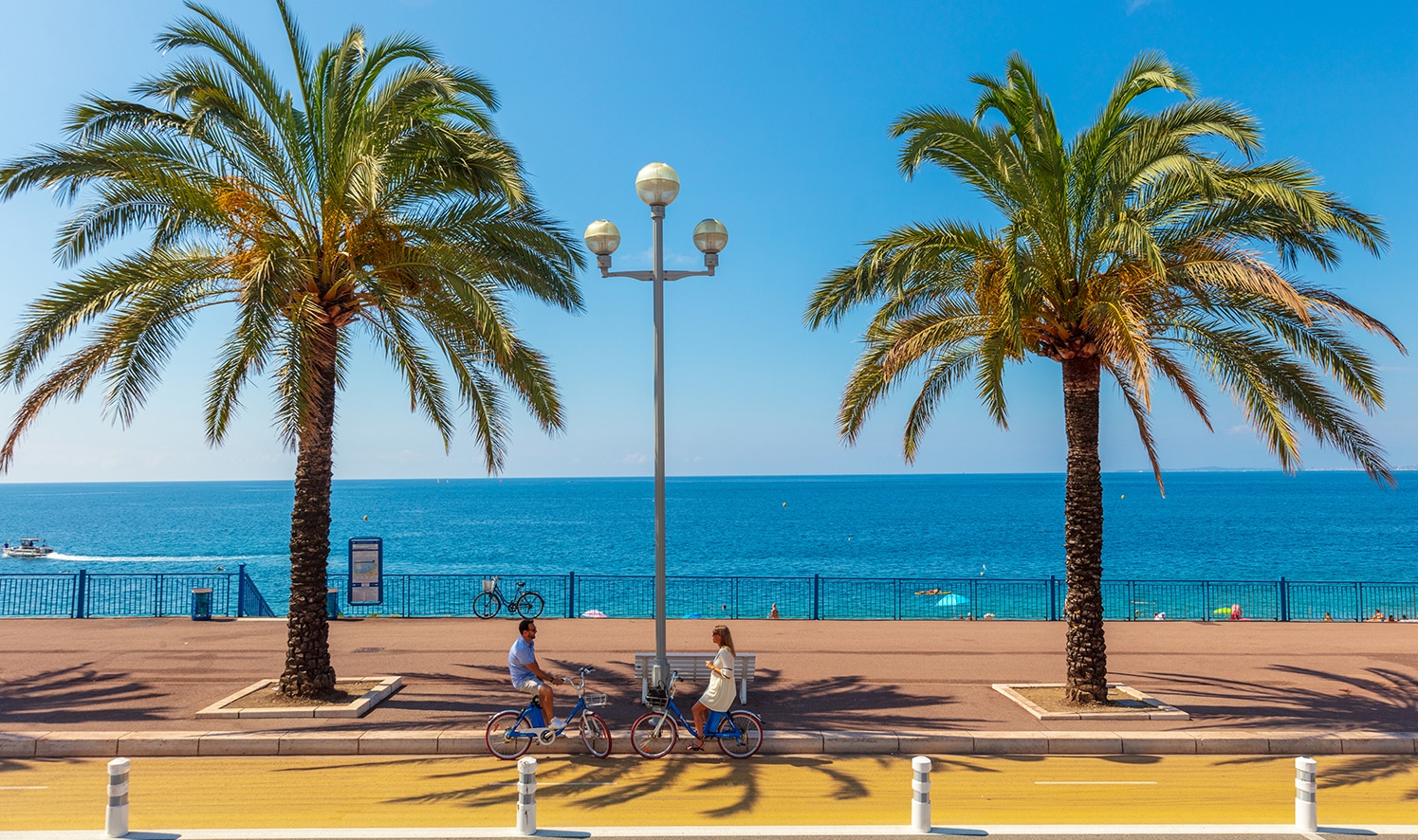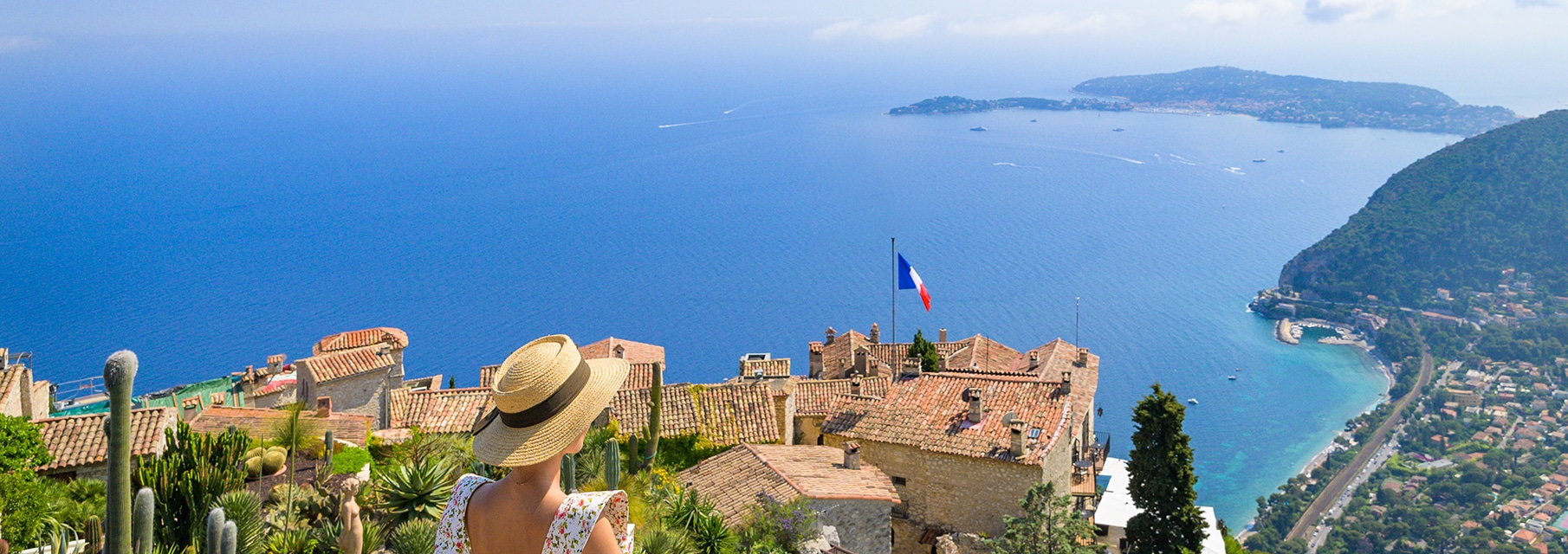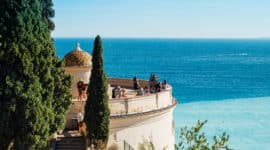Wildlife encounters at the summit
1 August 2023
Summer is here! Go backpacking to discover the wildlife of our mountains… Extraordinary encounters await you!
What emotion to surprise a chamois at the bend of a path, what joy to raise one’s head and admire the majestic flight of the eagle or the bearded vulture. You will not tire of the playful marmots near their burrows. A pair of binoculars and off you go for an adventure in the wild!
Did you know?
Located at the crossroads of multiple climatic, geological and altitudinal influences, the Mercantour National Park is home to an exceptional diversity of riches. The variety of its landscapes and natural environments makes it a showcase for preserved nature.
Large and small mammals, birds, reptiles and insects, the fauna of the Mercantour is very varied. It is made up of several hundred species, some of them inherited from the last ice ages. A diversity that even the most discreet walkers can observe.
The diversity and richness of this exceptional and sensitive environment invite us to privilege a discovery marked by respect.
1 – Chamois in sight!
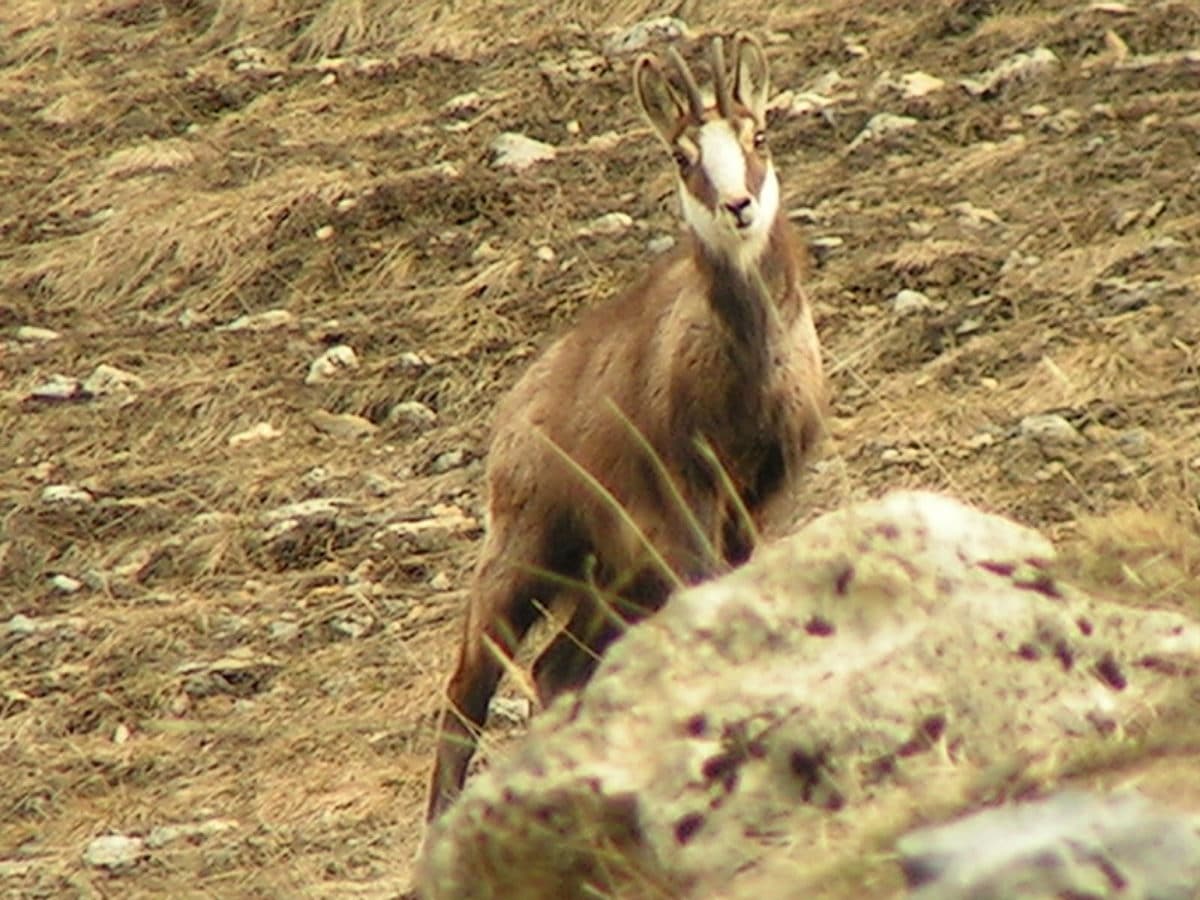
The king of acrobatics, the chamois has a light to dark brown coat and black, hook-shaped horns.
The chamois is present throughout the Mercantour mountain range. You will inevitably come across them during your hikes at altitude. Rather shy, the chamois lives in groups (mainly females and their young). The males are more solitary, except in autumn.
Sometimes surprised by your arrival, the chamois will emit a cry like a high-pitched whistle to alert its group.
In Tinée, Vésubie and Valdeblore, the high altitude meadows are its domain.
Our advice:
Take advantage of accompanied outings with a guide or a mountain leader, in fact, you will have all the chances on your side to see chamois and better understand their habits. The guides are equipped (binoculars or even spotting scopes), they know the territory and, quite simply, they have a good eye and will help you spot them.
2 – The ibex on the summit
Massive and majestic, the ibex will impress you with its climbing skills.
The males have long ridged horns and a haughty head carriage. In winter they fight violently for females, but in summer they are peaceful and less fearful than the chamois. You can observe them at your leisure, but stay discreet and far enough away not to disturb them.
You will often see them near high altitude chapels, blockhouses or other military buildings licking the walls, looking for the saltpetre which they are fond of and which brings them mineral salts. This is a way for them to fill up on energy and to complete their herbivorous diet.
In the Vésubie, the Gordolasque and the Vallée des Merveilles are famous spots to see ibexes.
In Tinée, go up to the Bonette sector (Vallon du Salso Moreno, Tête de l’Enchastraye) to enter the territory of the ibex.
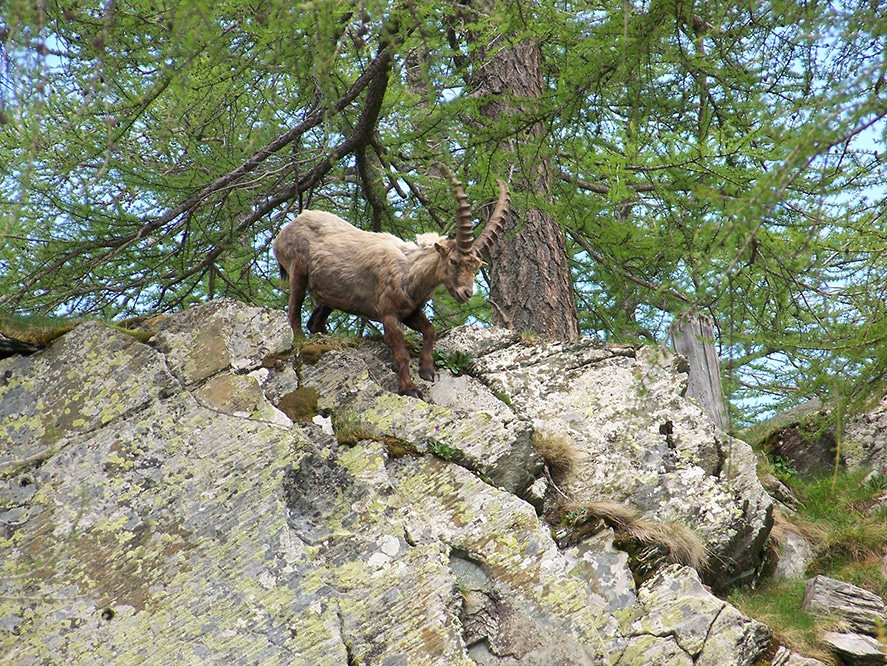
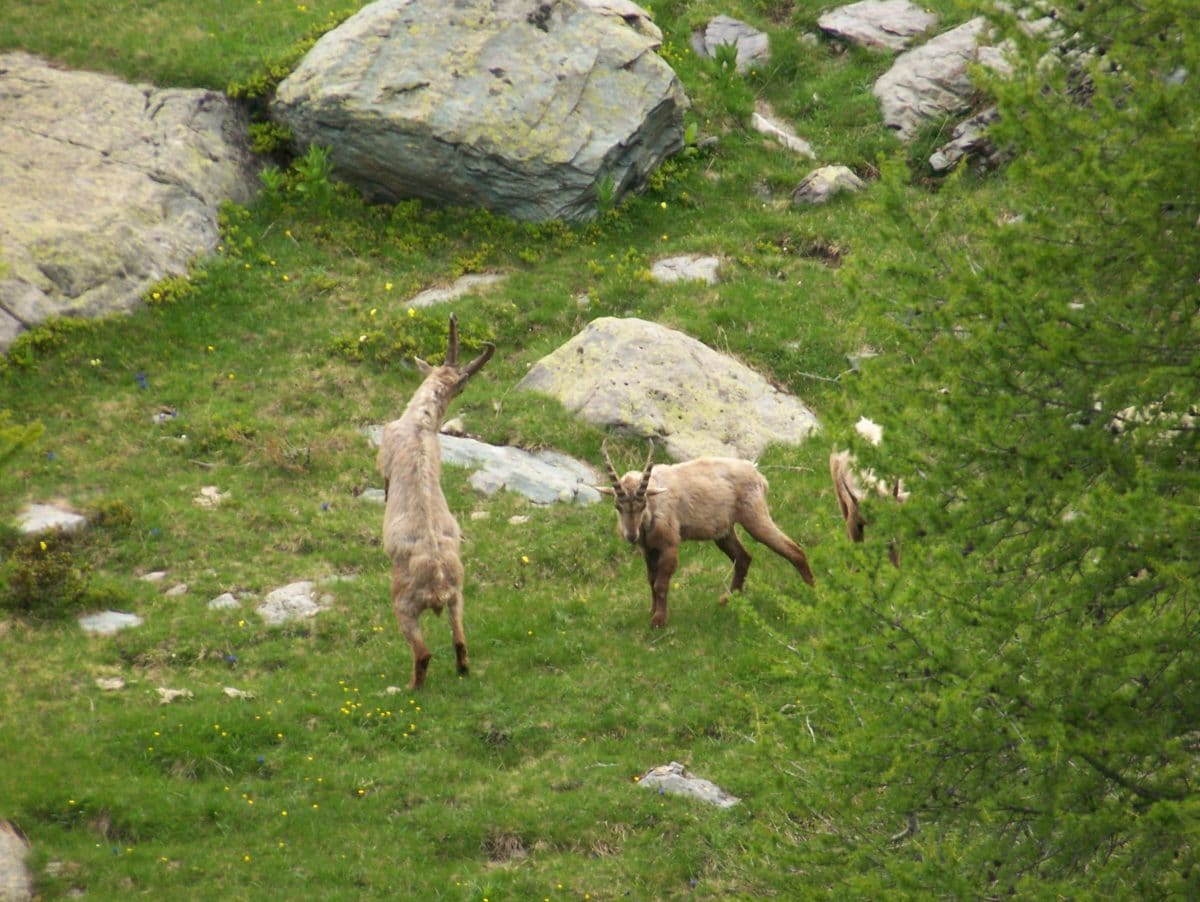
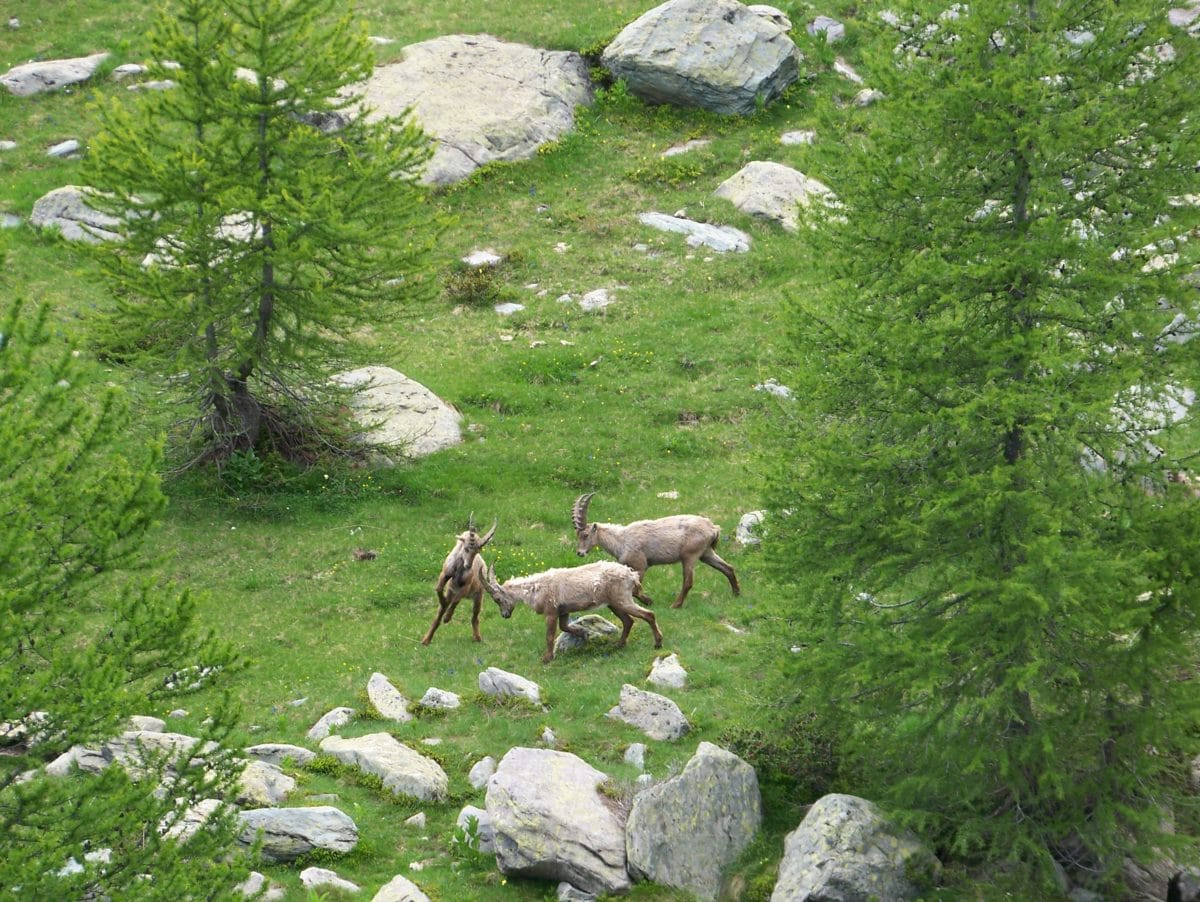
3 – The bearded vulture, a royal celebrity
Lord of the air, it is an emblematic bird of the Mercantour which will often hover over your heads while hiking.
With its impressive size (up to 2m80 wingspan), the bearded vulture had disappeared from our mountains and was reintroduced from Austrian populations until 2015. Its reintroduction campaign was supported by Prince Albert of Monaco.
Indeed, the bearded vulture is fond of carcasses of dead animals in the mountains (chamois, ibex, sheep) but it comes second to all other scavengers in consuming the bones. It has earned the nickname of bone breaker. When it sees a carcass, it will seize the largest bones, such as shoulder blades or shins, to rise into the air and throw them onto a block of stone. It breaks them to swallow them better.
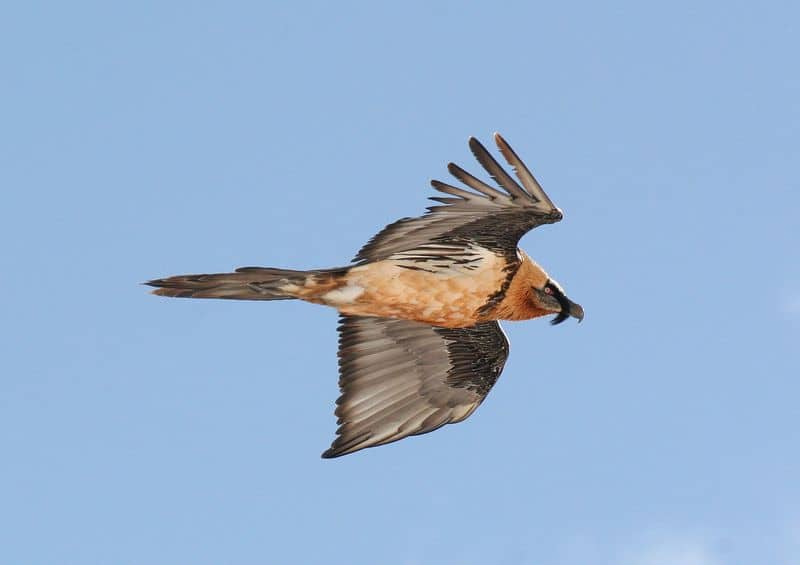
Good to know:
Pairs of Bearded Vultures are established in the Haute Tinée and raise their young every year. Their nesting areas are subject to special protection measures, so as not to disturb the young in their nests (risk of falls, high mortality in the first year).
To discover the land of the noble Vulture, leave from the hamlet of Bousiéyas on the Bonette road. All summer long, the gîte or the guest rooms welcome you:
4 – The golden eagle, a piercing eye on the lookout for marmots
Don’t forget your binoculars when you go hiking, the whole Mercantour chain is overflown by the golden eagle which watches over the mountains with its sharp eyes.
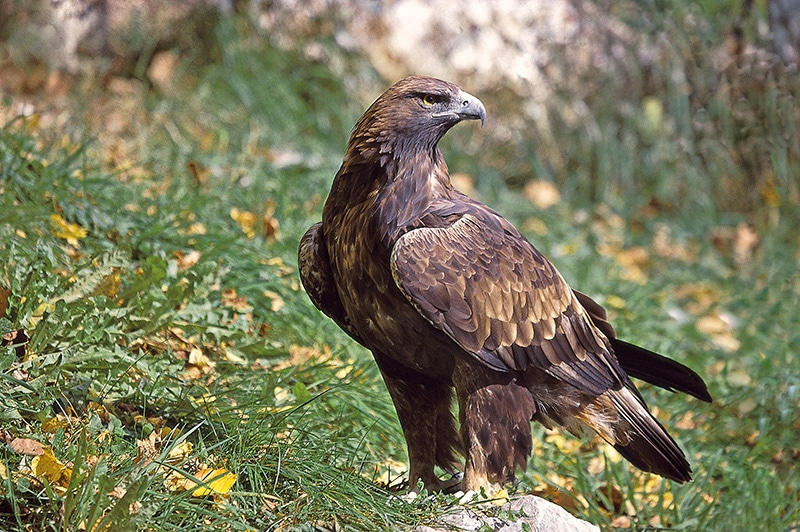
Its silhouette is recognisable with a long, rounded tail, brown plumage, lighter in the central wing area and a wingspan of about 2m.
A swift raptor and a skilled hunter, the eagle swoops down on its prey (small mammals such as marmots) and seizes it in its sharp talons.
In Latin, its name Aquila Chrysaetos comes from the Greek krysos for gold and aetos for eagle, which could be translated as “golden eagle”. The eagle is often associated with rulers and emperors to whom it transmits strength, power and prestige. The eagle was the bird of Zeus in ancient times and became the symbol of the Roman armies or the emblem of Napoleon’s regime. It is also the emblem of Nice!
5 – Wolf, are you there?
I don’t know about you, but it’s the animal that first comes to mind when I think of the Mercantour mountains.
Having returned to the massif in 1992, this large predator knows how to be very discreet and is an expert in the art of camouflage. Difficult to see, it can sometimes be heard during night-time outings, especially in early summer when the youngsters call the pack. It is an overwhelming sensation to hear its powerful howl echoing through the mountain forests.
A tireless hunter of ungulates (chamois, mouflons, sheep and others….), it lives in small packs, led by an Alpha couple who are the only ones to reproduce. The young often leave the pack around the age of two to discover new areas.
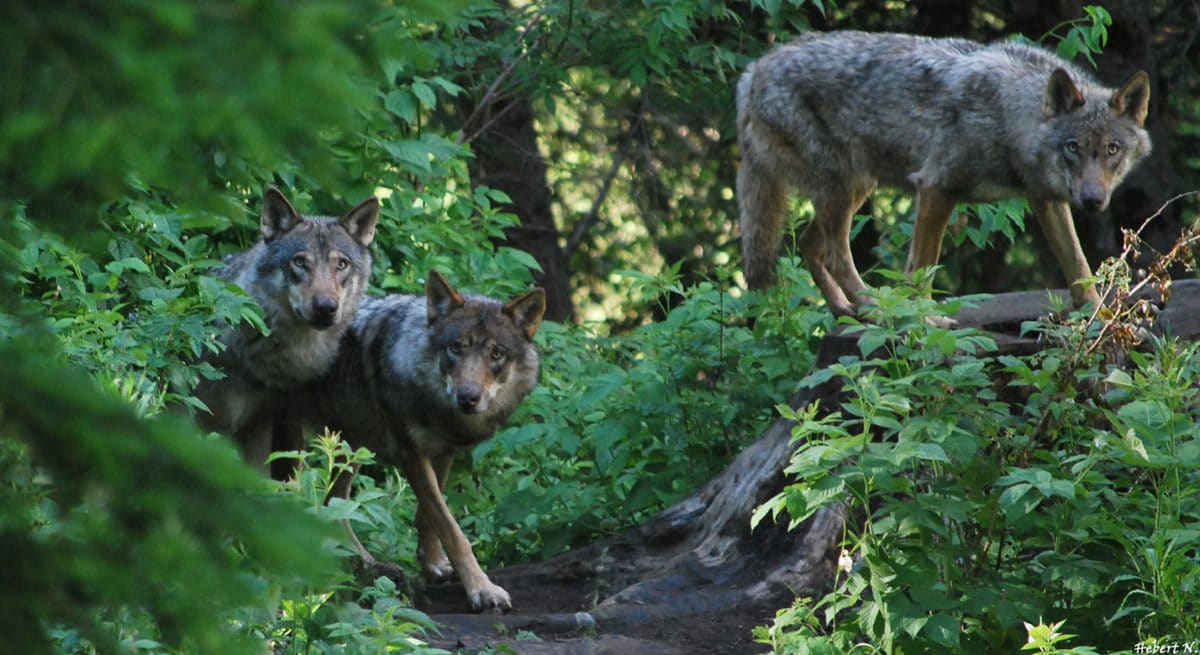
Good to know:
First seen in the Mollières valley, between Tinée and Valdeblore, the wolf has colonised the whole of the Mercantour and from there the Alps and the Massif Central. The wolf population in France is currently estimated at 580 individuals.
You can see wolves at the Parc Alpha, in the Boréon. It is the only animal park in the heart of a national park. It offers an exceptional setting for a rare encounter with a mythical animal. A mountain of emotions for young and old. Located between 1,500 m and 1,800 m above sea level, Alpha Park invites walkers in all seasons to immerse themselves in the life of packs of wolves. The opportunity to discover the environment of the wolf in the shelter of hides specially designed for observation. The Parc Alpha is open every day, by reservation*, (online payment possible), and offers you its program of activities and workshops.
If you don’t see this great predator, you will surely come across its cousins, the dogs that guard the flocks of sheep. Impressive, they can bark and are sometimes equipped with pointed collars. The Nice Côte d’Azur Metropolitan Tourist Office and the Mercantour National Park have signed an agreement for the creation of a mediator’s post for the whole summer. The mediator’s mission is to raise awareness among hikers in the field, to enable them to acquire good practices to adopt when dealing with herds. Perhaps you will come across him during your walk? Don’t hesitate to talk to him.
6 – The marmot, a mischievous creature
Summer is marmot season! You and your family can observe them at your leisure. Shy marmots and marmottons play in the high meadows from 1800 m.
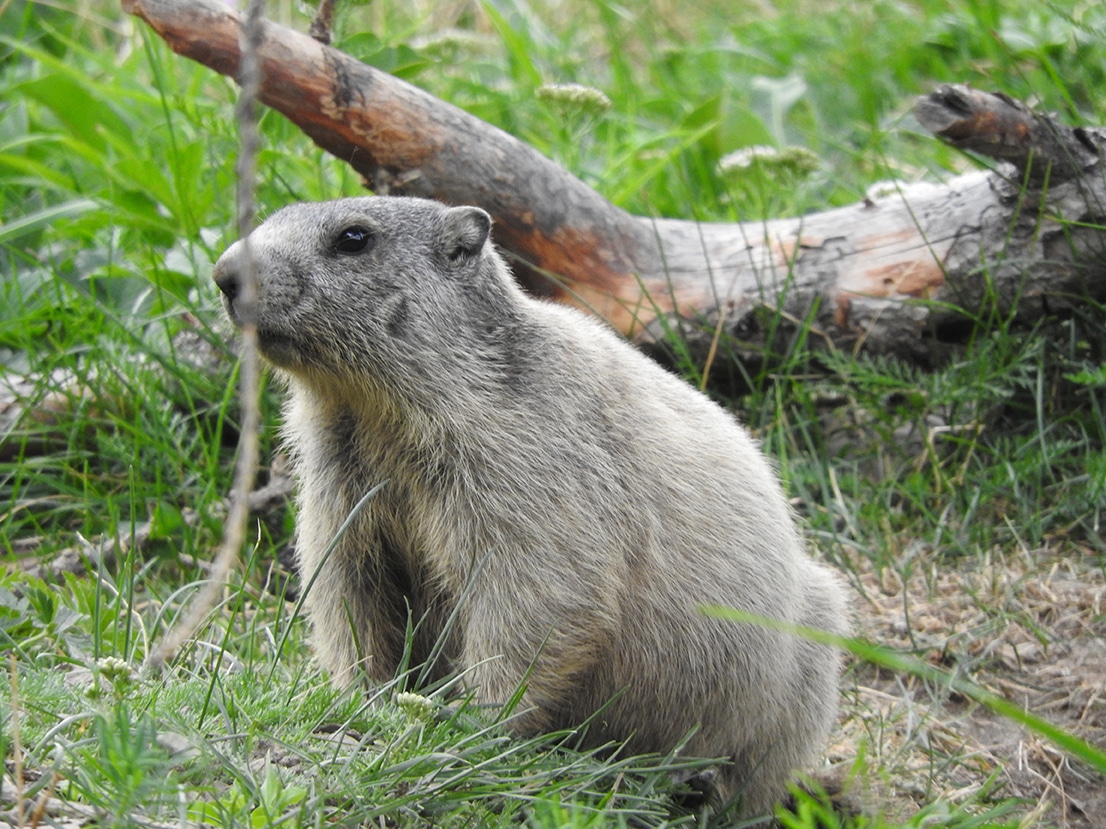
In the group, an adult is always on the lookout for predators, eagles, foxes or dogs. You will be on the list of potential dangers and they will spot you from a distance.
A word of advice: if you hear their cry (a high-pitched whistle), take the time to settle down, sit on a stone at the edge of the path and keep your eyes open…. Within 2 minutes, a curious head will emerge from a burrow and soon the marmots will resume their galloping. Now enjoy the show!
For their own good, you must resist the temptation to feed them. Marmots find everything they need in nature and feeding them makes them sick. In some areas, they even suffer from diabetes due to obesity. To love and respect them, let’s admire them, but from a distance. On the other hand, there is no reason not to take pictures of them!
Good to know:
On the big mountain passes, such as the Bonette or Lombarde, many marmots build their burrows along the roadside. Be careful if you use them, they are sometimes not afraid and cross in front of the cars, you have to drive very gently not to run them over.
Want to see all these animals up close? Opt for a night in a mountain refuge. There are many of them in the Mercantour mountain range. I promise you a wake-up call with a view of herds of chamois and marmot burrows. On the way up, you will see eagles, lammergeiers, jackdaws and perhaps vultures. For a snack, you will have, as a bonus, a good slice of blueberry pie as well as the welcome and the hiking advice of the manager!

